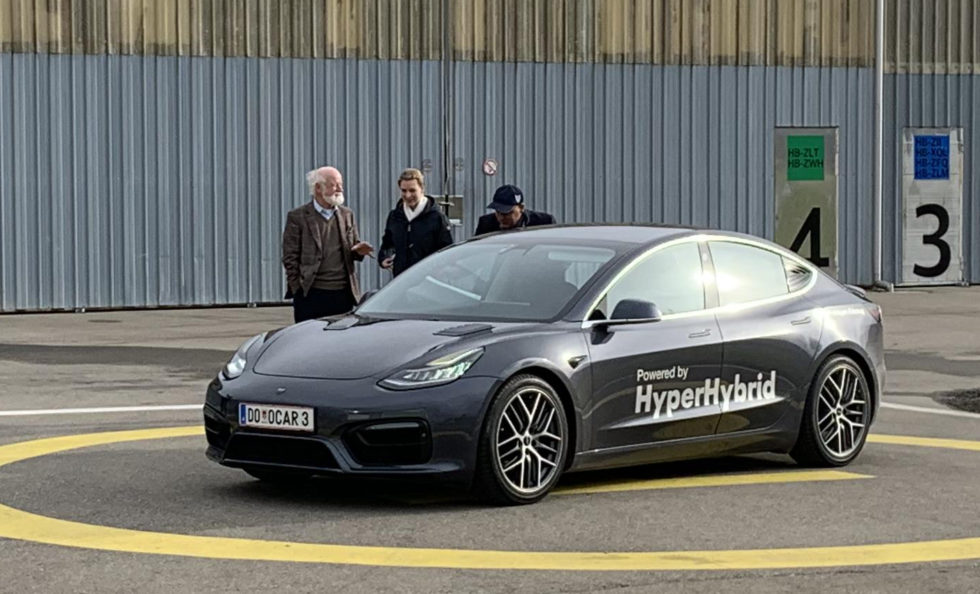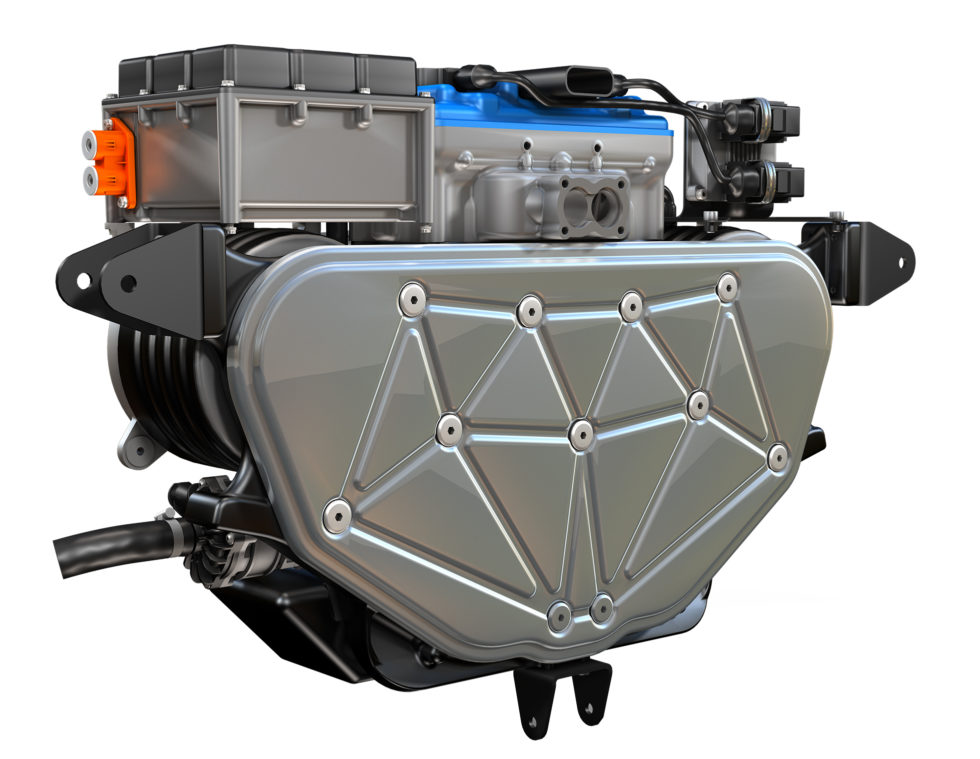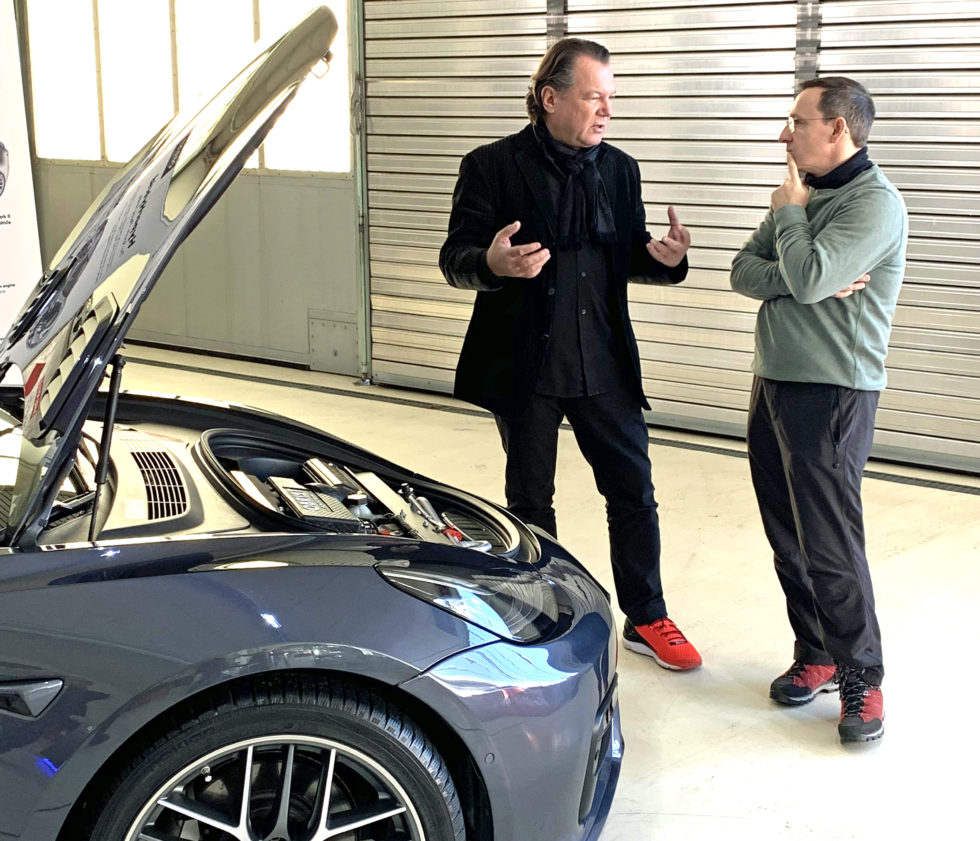An engineer from Austria wants to take a new direction with a new drive concept for electric mobility.
Electric carJan 3, 2020
Franz W. Rother
Photo: Photo: Thorsten Rixmann
What are the biggest brakes currently for the widespread spread of electric cars? A manageable range of models, an incomplete infrastructure, but above all the high price of the vehicles: A Tesla Model 3 in the cheapest version Standard Range Plus (44,390 euros) is around 10,000 euros more expensive than a comparable spacious sedan of the type Ford Mondeo with hybrid drive. Even the new government subsidies cannot completely bridge this huge price gap.
Small engine in the Tesla "Frunk"
So what do you do if you want to do something good for the environment despite a modest budget, travel comfortably and without fear of range? You get a Tesla Model 3 - and convert it into a plug-in hybrid. With a small, highly efficient petrol engine in the front "frunk" and a significantly smaller and cheaper lithium-ion battery in the vehicle floor. Instead of around 400 kilometers, the Tesla then only drives almost 100 kilometers purely electrically through the landscape. But the vehicle would be significantly lighter and only half as expensive as the original from California. And with a range of over 1000 kilometers, it would beat even the most expensive Tesla by a long way.
Frank Obrist from Lustenau in Vorarlberg, founder and main shareholder of the engineering company Obrist Powertrain on Lake Constance, will surely incur the anger of the "Teslaratis" and the disciples of Elon Musk with his conversion of the fully electric Model 3. However, the Austrian entrepreneur and father of seven children is absolutely convinced that his “hyper hybrid” performs significantly better than a pure battery car in terms of cost and environmental aspects. In addition, vehicles with drive technology can already be used in countries and regions without a dense network of charging stations, such as in Asia, Africa and Latin America.
Silent and low vibration
Certainly, unlike the Tesla, the "Obrist Mark II" (the first prototype called the Mark I was based on a Chinese Geely EC7) is not yet completely emission-free. But the small two-cylinder petrol engine, which works as a generator under the bonnet, always runs (if it runs) in the optimal speed range and always with a perfect air-fuel ratio. The engine with an efficiency of 40 percent therefore does not require exhaust gas aftertreatment and is content with an average of only about two liters of petrol per 100 kilometers. If it were operated with synthetic fuel generated with the help of wind or water power, for example based on biomass, it would even be completely environmentally neutral. It would already be tax-free today because, due to the electrical range of 96 kilometers and the rules of the European Union, it only calculates CO2 emissions of 23 grams per kilometer. This means that the current limit values are undercut as much as the stricter limits for 2030.
Obrist has been working on his hyper-hybrid concept for over seven years. The engineer and former employee of the inventor Felix Wankel developed the extremely economical and quiet "Zero Vibration Generator", on which the coins remain as if on a twelve-cylinder, as well as the vacuumed battery. Although this stores only 17.3 kilowatt hours (kWh) of electricity in the Mark II, it weighs only 98 kilos instead of 478 like the 50 kWh block in the Tesla Model 3. Both units are also inexpensive to manufacture: Obrist has the generator at around 1200 euros calculated per unit, the battery with 2000 euros.
Range extender "fundamentally wrong"
The energy management system, which works much more efficiently than in other vehicles with a serial hybrid drive, is also patented. This also applies, and in particular, to the version of the BMW i3 with range extender that Bavaria has been offering until recently. Comparisons with the car quickly upset Obrist: “The name Range Extender already contains everything that is fundamentally wrong for engineers. Why should I buy an electric car that makes a conventional combustion engine do all the work when the battery is empty? ”With all the noise, vibrations and emissions that go with it.
Constant recharging protects the battery
In Obrist Mark II, the combustion engine is not an auxiliary engine that jumps in when the battery is at the end of its strength. With the concept of the Austrians, the generator jumps in when the car is driving at speeds of over 65 km / h - not to direct additional forces onto the drive axle, but to gently recharge the battery. “What all today's batteries are least capable of is fully charged and completely discharged. After maybe 500 charging cycles, the battery only has a capacity of 80 percent, ”criticizes Obrist. With his system, the battery is always recharged a little in between - "chemistry can convert ten times more energy."
Everything sounds good, but when will we see the first production vehicle with the drive on the road? Obrist smiles - and remains silent. Shortly before the end of the year, he was on the other side of Lake Constance with the prototype (and a BMW i3 with a range extender as a comparison vehicle) at a large car supplier in Friedrichshafen. A name is not mentioned, but when the name ZF comes up there is no denial. There, according to an insider, they were very impressed by the technology and the test drives.
First production cars by 2023 at the latest
In October, a first license agreement was signed with a "prominent international market player", and a second license agreement will be concluded shortly. And then it could be very quick: in Lustenau, it is expected that the first car with the hyper-hybrid drive will be available as early as 2023. It will certainly not remain an exotic one: Mazda is working on a variant of its MX30 electric car with a Wankel engine as a power generator. The Japanese also consider the development of heavy electric cars with large batteries to be a mistake.
We will see which concept prevails.






